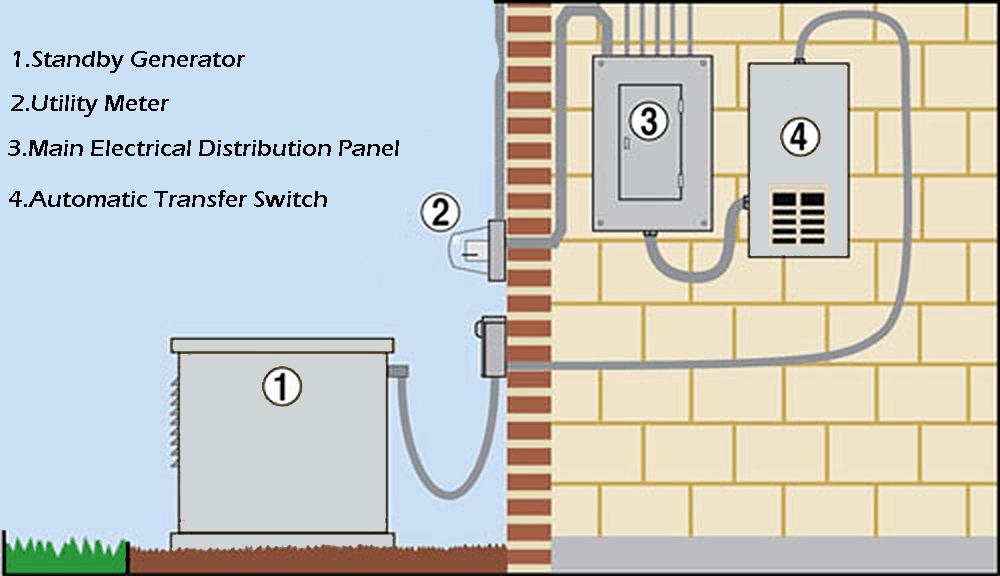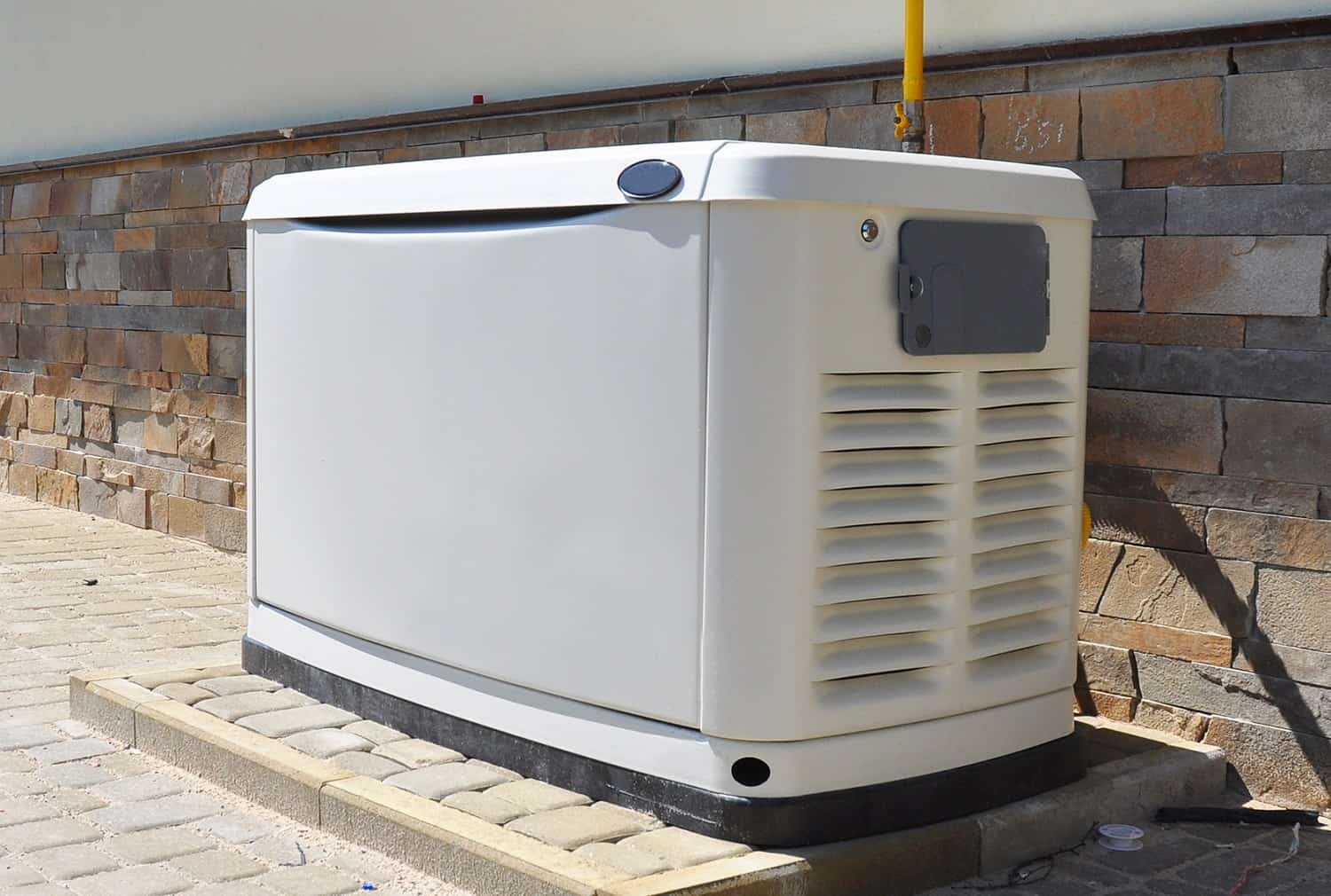Table Of Content

Read on for pros, cons and highlights of the best whole-house generators, plus our generator buying guide to help you find the right fit for your family’s needs. A changing environment and our society's rapid shift in work conditions are two of the top reasons you might need a whole house generator. Lee has over two decades of hands-on experience remodeling, fixing, and improving homes, and has been providing home improvement advice for over 13 years.
Warranty (20%)
You can read more about our editorial guidelines and the whole house generators methodology for the ratings below. A good standby generator should last at least 20 years if well maintained. A heavily used generator will last for a shorter amount of time and will need to be maintained more frequently to increase its lifespan. Portable generators are less expensive and take up less space on a property than whole-house generators—and they can be loaned to friends and family if they need a power boost. In some circumstances, though, there are clear benefits to choosing a whole-home generator instead.

Step 1: Choose a Fuel Source
Exceptionally efficient, diesel-powered generators are more cost-effective the larger they get. After the purchase and installation, however, there are still some costs for homeowners to keep in mind. An installed generator hooks into a home’s electrical system, so a permit is required to ensure that the work is done correctly and safely. In addition, most municipalities will require a permit to pour a concrete pad to support the generator.
Operating Temperature Range
It is one of the largest air-cooled generators in the market and it can cover your entire house. Managing the load on your generator protects it from being overloaded by exceeding its capacity. When power from the grid initially fails, and the ATS turns on the generator, there may be too many items in the home calling for electricity. The load management device “sheds” the requests from low-priority devices while maintaining current to the more crucial systems and appliances. In some extreme cases, you may even be able to help provide power to neighbors. Generators burning natural gas can be directly tied to the home’s natural gas line, allowing practically limitless fuel without having to worry about running out.
Transfer Switch
A candid view on installing a whole-home generator in 2022 - Space City Weather
A candid view on installing a whole-home generator in 2022.
Posted: Tue, 27 Sep 2022 07:00:00 GMT [source]
If the generator gets overheated, it might leave the gas, which is fatal to human life. No matter how much you know about generators, follow the instructions that come written in the manufacturer manual. The instructions differ from one manufacturer to other, so if you are switching from one brand to another, don’t ignore reading the installation and care instruction. Attach the generator’s electrical cable from the generator to your house.
Most portable generators are gasoline-powered and generally can keep lights on and fridges running, but little more, for several hours. They can't be depended on for longer-term backups, such as when you expect power to be out for several days. A whole house generator is the most powerful type of home generator available. It’s wired to your electric panel and turns on automatically when you lose power, so your entire home stays online if you have the right size. In contrast to a standby or portable generator, a whole house generator will power many more appliances for as long as you can provide it with fuel. Many standby generators have automatic transfer switches, meaning they will automatically transfer the power supply in your home from your utility to your generator when the power goes out.
Champion Power Equipment 10000-Watt Tri-Fuel Portable Generator
Generators are available in various sizes that can power just a few essential home devices or an entire home’s worth of devices and systems. A whole-house generator is simply a large version of a standby generator, capable of temporarily providing enough electricity to operate everything, or nearly everything, in your home. The major con of portable power stations is the cost per watt, which can be significantly higher than traditional portable generators. Additionally, because these power stations must be charged via plug-in or solar, they may be difficult to use long-term during a power outage. If you are looking for an option for tailgating, powering key devices or appliances during a short-term outage, portable power stations are a great choice. A portable generator you have to wheel out of the garage, run extension cables to and then pull a cord to start it up.
Best for Portable Power: Pulsar G12KBN Heavy Duty Portable Dual Fuel
Proper sizing of your generator is crucial to the success of any installation and requires a good working knowledge of electricity, as well as the load requirements of your home's electrical appliances. Both LP and diesel fuels will require tanks large enough to run the generator correctly. Similarly, the natural gas meter and gas lines will need to be the correct size. Before installation, your contractor will verify this with you, but you can find this information in the installation manual on our product pages.
Best Standby Generators
Having a home generator will allow you to keep on lights, important appliances, essential medical equipment and your home’s heat. If you live in an area that gets frequent but short outages, a generator can ease the inconvenience and ensure your day is never interrupted by an unexpected blackout. You can also operate these units using natural gas from your gas line for unlimited fuel. These generators usually output between 5,000 and 520,000 watts and will cost between $6,000 and $11,000, including installation costs. The most crucial factor in determining which standby generator is suitable for your needs is whether it can keep up with your electrical demands during an outage. During a power outage, keeping crucial systems and appliances, such as HVAC and refrigeration, operating is enough for many.
That’s unpredictable to an extent, of course, but think about what you’ll need to power and see which of the three power-outage scenarios below match your situation. A home generator with an endless supply of fuel and no mechanical issues could theoretically run until it needs regular maintenance. A generator engine is similar to your car engine in that it requires upkeep such as oil changes, belt replacements and similar maintenance.
We looked into a few crucial factors to narrow our list down our top seven. These are also factors you should research when making your final decision. Some customers report issues with Westinghouse’s shipping, such as poor packaging and late arrivals, and a few other comments reflect difficulty contacting technical support.
What to know about buying home generators this winter - KCENTV.com
What to know about buying home generators this winter.
Posted: Wed, 10 Jan 2024 08:00:00 GMT [source]
Erica Puisis has been covering home appliances and tools that make everyday life easier. To find the best home generators for this list, she considered factors like power output, size, fuel type, and cooling system. Most of the generators on this list are whole-home generators, but portable and battery generators are included for short-term supplementary power needs. Standby generators used in larger homes often run on natural gas or propane. These power plants are more environmentally friendly than others because of the way they generate electricity.
This Briggs & Stratton generator is a good option for someone who lives in an area with frequent power outages. It runs at 70 dBA, quieter than most portable models but louder than you might want in a small home. Additionally, some customers have reported issues with starting and run time after more than five years of use. However, many others also praise its reliability and easy installation. When you lose power, a whole-house generator keeps your home’s systems up and running. Some are permanently installed to power your home in an emergency, while others are portable for off-grid camping and mobile job sites.
We recommend multiplying the total wattage of your appliances by 1.5 to give yourself a safe margin of error. A small to medium-size house in the U.S. typically uses a minimum of 5,000 to 7,000 watts, so you should expect most generators to have a minimum of 8,500 to 10,000 watt outputs. If a portable generator is adequate, most homeowners can prepare the generator before an anticipated outage or get it running pretty quickly after an unanticipated one. However, a larger standby or backup generator is not a DIY installation. One of the most unexpected benefits of a standby generator is that for those who work or run a business from home, one of these units can make the difference between a deal made and a deal lost. Without a generator, an ill-timed thunderstorm can cut off connectivity moments before a big meeting or client consultation.

No comments:
Post a Comment